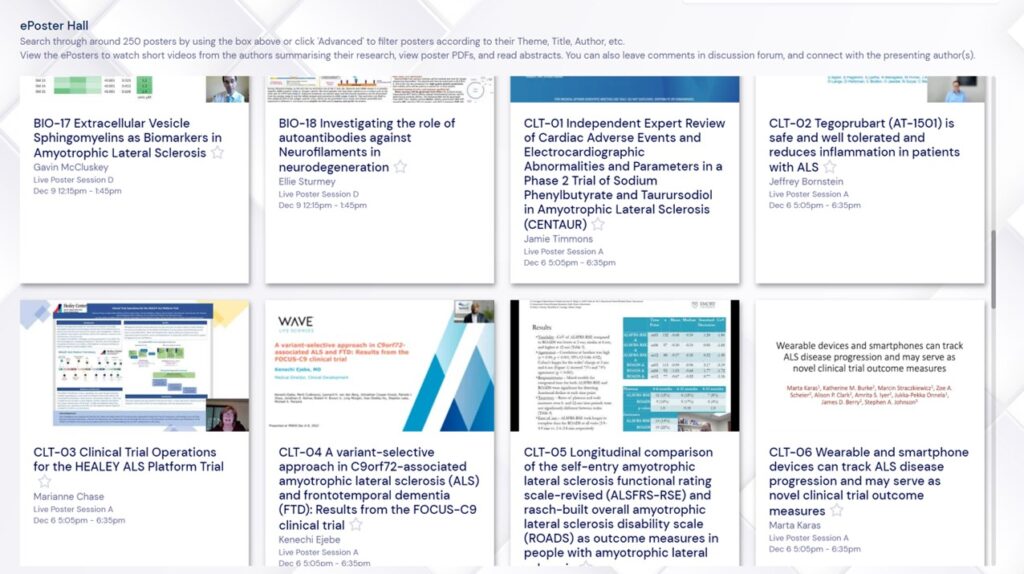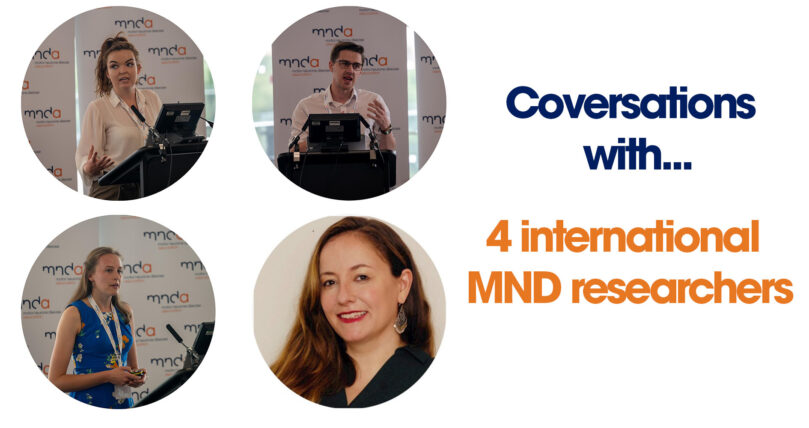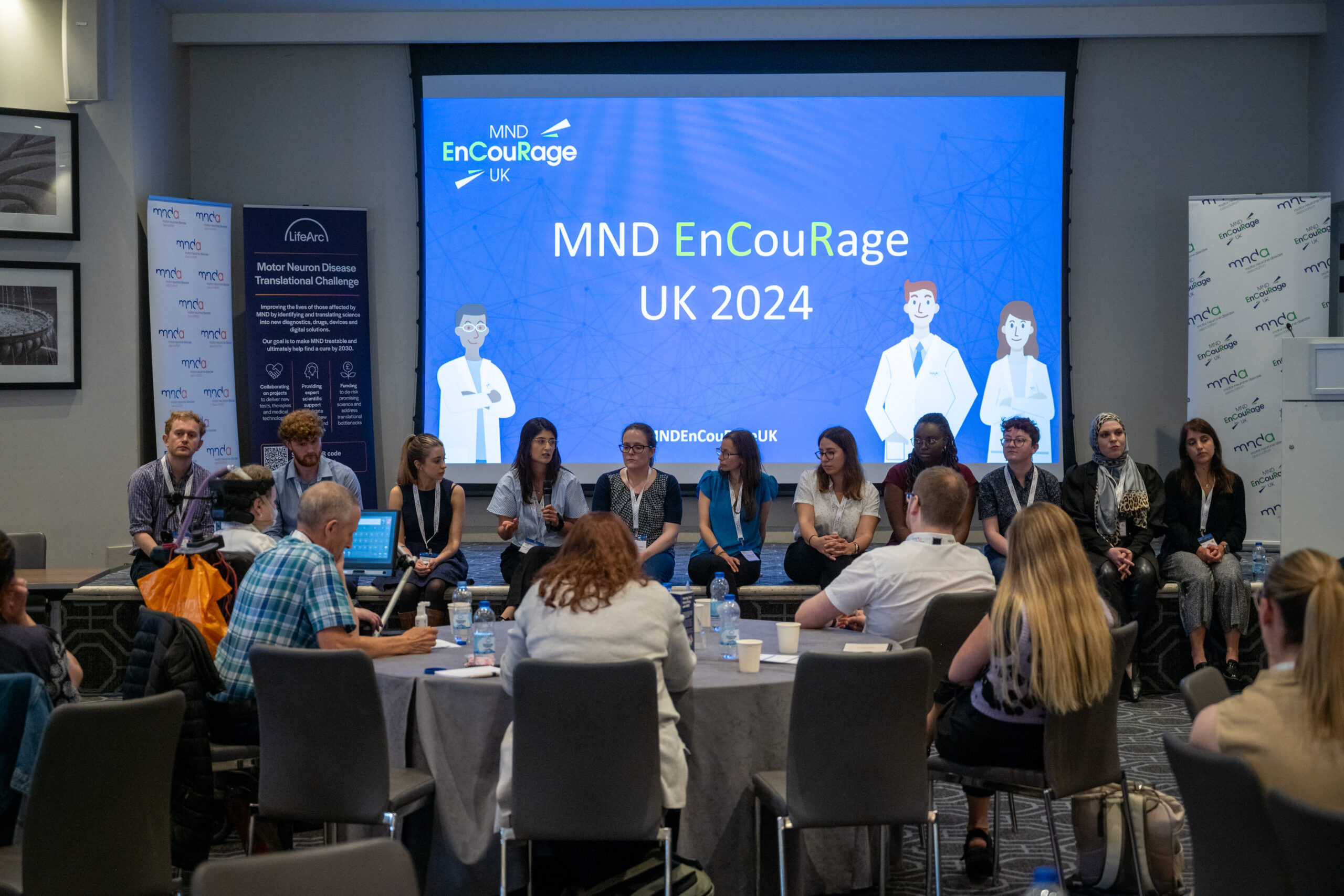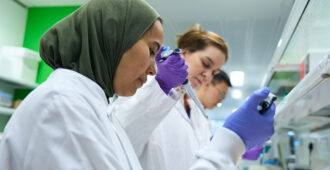This blog is part of our Symposium Spotlight series, where we’re looking back on some of the research that was presented at the 33rd International Symposium on ALS/MND. Today we’re taking a closer look into some of the work presented by researchers during the live poster sessions.
Last week at the 33rd International Symposium on ALS/MND, we heard some exciting updates on a wide range of research happening all over the world. The pace of ALS/MND research has drastically increased over recent years and we now have a better understanding about the underlying biology of the disease which is crucial to being able to identify new potential drug targets. The symposium is the largest scientific and medical conference specific to ALS/MND and provides the latest research updates across the world. This event brings the ALS/MND research community together to share their work, exchange knowledge and foster new collaborations so that the pace of research can continue to grow.
Alongside the invited plenary speakers and oral talks, the live poster sessions are hugely important in allowing researchers to share their work at the symposium. These sessions provide the opportunity for many international ALS/MND researchers to present what they are working on, share their findings with others working in same area, network and spark new ideas. This year we had over 250 posters presented in these live sessions.
For the live poster sessions, presenters are asked to submit abstracts (brief summaries), a scientific poster and a short 3-minute video on their work. Delegates can then virtually ‘wander’ around the ePoster Hall viewing all the posters, similar to if they were in a in-person event. During the live poster sessions, researchers are available to talk to people that are interested in their work and take any questions.

We chatted to some of the researchers who presented their work in live poster sessions to find out more about what they’ve found so far.
1. Dr Liam Knox
Liam from the Sheffield Institute for Translational Neuroscience (SITraN) presented some results from his work on telehealth (healthcare given remotely by phone or online) in ALS/MND. Hear more about his results below.
2. Danielle Boyce
Danielle from the Johns Hopkins Packard Centre for ALS research shared her work on understanding the level of basic research knowledge people living with neurodegenerative conditions, such as ALS/MND, their family and caregivers have and how engagement within the ALS/MND research community could improve this. Find out more about her research below.
3. Sarah Roscoe
Sarah from the Sheffield Institute for Translational Neuroscience (SITraN) presented her research investigating a method which would help to determine the optimal number of calories a person living with ALS/MND should be consuming. Hear more about her findings below.
4. Dr Róisín McMackin
Róisín from Trinity College Dublin shared her research looking at how non-movement related parts of the brain are changed during ALS/MND and investigating new ways to measure these changes. She is one of the Association’s Junior Non-clinical fellows. Find out more about her results below.
This year has been a very exciting year in ALS/MND research! We’ve seen lots of results announced from clinical trials, new drug approvals in some countries and more clinical trials begin in the UK than ever before. We hope the current momentum of research continues in 2023 and we’re very much looking forward to the 34th International Symposium on ALS/MND, which we hope will be an in-person meeting, with plenty more advances in ALS/MND being shared on the global stage.
We would like to thank all of the researchers for taking the time to talk to us about their work.






